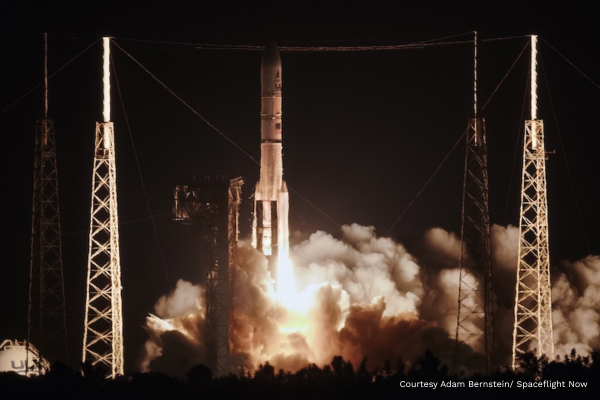

At 8:56 P.M. Eastern daylight time this past Tuesday night, two methane-fueled BE-4 engines roared to life at pad 41, Cape Canaveral Space Force Station. With three million pounds of thrust, United Launch Alliance (ULA) first fully operational Vulcan rocket system was on its way to orbit with two military satellites up top for the first U.S. Space Force sanctioned flight of ULA’s newest launch vehicle.
Three and a half minutes later, two hydrogen fueled Aerojet Rocketdyne RL10C engines ignited and took the second stage Centaur rocket on its journey to space above the Equator, at a permanent parking spot in space in geosynchronous orbit. The beauty of the Centaur system is the ability to lift heavy payloads into exotic orbits, like this mission, without requiring the payload satellite to use much of its own fuel to travel and park at the right spot.
From that permanent spot above the Earth, one fully classified satellite will perform a secret mission; and the other satellite will provide experimental tests of new navigation technology and atomic clocks that could lead to a new type of jam proof GPS data for global navigation.
ULA’s workforce are proud members of IAM Local 610 at Cape Canaveral Space Force Station, Local 971 in Jupiter, Fla., and Local 44 members in Decatur, AL.
This was the 101st successful launch of a ULA rocket system thanks to the hard work and dedication of this multi talented group of IAM Brothers, Sisters, and Siblings.